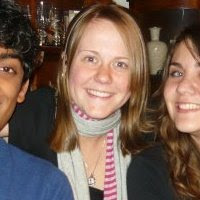: Porter’s Strategic Typology-√
: Barney & Griffin, “The Miles and Snow Typology”√
“Action Company vs. Multi-Company”
“Levels of Culture”√, “Adaptive vs. Non-Adaptive Cultures”, “Descriptives of Cult-like Cultures”√
Porter’s Strategic Typology
- cost leadership strategy : cost penetration of mkts -lower price 1st
- differentiation strategy: uniquify yo product
- focused CLS: CLS with target mkt
- focused DS: DS w/ target mkt
- CLS: sam walton w/ wal mart
- DS: saks 5th ave, upscale shtuff
- sCLS:walmart focused CLS on rural communities - can build big places
- fDS: amazon.com - buy books over internets
Organizational design can help an organization achieve increases in efficiency (CLS), quality (DS), innovation and creativity, and responsiveness to customers - hard to do CLS and DS -
- “The Miles and Snow Typology”
- prospector: 3m w/ new products, lots of RnD (innovative, search for new mkts and growth opportunities, encourages risk taking)
first to mkt-
organic structure- can be prob bc of diversity, not a lot of consistency(Solutions: Tendency toward product structure with low division of labor and a low degree of formalization; decentralized control and short-looped horizontal information systems; complex coordination mechanisms and conflict resolved through integrators.)
flexible, prototypical tech: avoid LT commitments to techs that might not work (Solutions: low degree of routinization and mechanization; technology embedded in people.)
- defender: bic pens - keep mkt, dont do much new stuff (maintains growth, serves current customers)
seal off stable set opf products and customers: keep yo monopoly : focus on narrow domain, stay aggressive but be excellent w/ customer service and be careful w/ growth - do w/ penetration
mechanistic structure: maintain strict control and ensure efficientcy:: usually have f(x)nal structure w/ extensive division of labor, hi formalization, hi centralizaion, long looped vert info system, simple and all conflict res thru c hierarchy
- analyzer: IBM - strives to pro and def : has a mkt, that they took from prospectors like apple, and they defend and try to find new things. also P&G bc they need to keep up their current products and be continually adding new (maintains and has mod emphasis on innovation)
second in strat - maintain and create new : lo investment in RnD,
matrix structure: accommodate stable+dynamic :: teams, moderately centralized, some conflict res thru product managers and some thru normal heirarchy
dual tech core: how to stay efficient in ∆ing stuff:
- reactor: has no strat, drifts for ∆, lots deny this strat cuz it sucks. Honeywell used it and either was super innovative or laying off lots of talent. didnt work. they are only still around bc they developed strats when they colluded w/ new folks
some go from pro to def when they have a stable mkt and then competition comes. (ie mrs. fields)
Schein's Levels of Organization Culture
less awareness
- Basic assumptions: man+nature, man+man, space, time::invisible, taken for granted, preconcious
- values of idealogy: ideas/goals, means::
- artifacts and creations:language, art, tech, status system, gender rules/family::visible but not always decipherable
more awareness
Cult-Like Cultures
teach norms, have things elite to the group(language, songs), promote from within (shaping young minds), award publicly those who conform,
print cases.

No comments:
Post a Comment